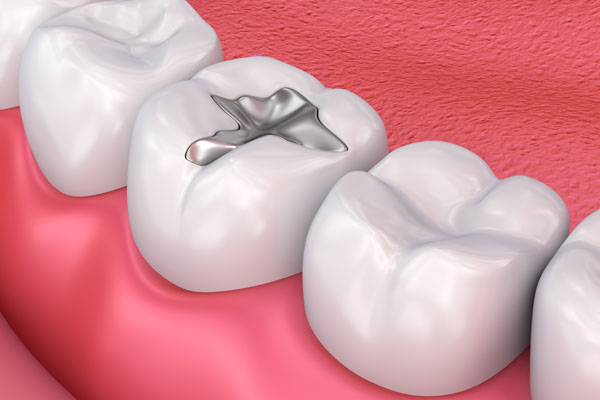Dental fillings are one of the most common treatments used to restore teeth damaged by cavities or decay. After a filling is placed, many patients wonder how long it will last before it needs to be replaced. The answer depends on various factors, including the type of filling material used, your oral habits, and the location of the filling in your mouth. In this blog, we’ll explore how often fillings need to be replaced, the factors that influence their longevity, and how to care for your fillings to maximize their lifespan.
How Long Do Fillings Last?
Fillings are designed to be durable and long-lasting, but they don’t last forever. The lifespan of a filling depends on the material it’s made from, the location of the filling, and how well you care for your teeth.
1. Amalgam Fillings (Silver Fillings)
Amalgam fillings, often referred to as silver fillings, are made from a mixture of metals, including silver, mercury, tin, and copper. These fillings are known for their strength and durability, making them ideal for back teeth where chewing pressure is highest. On average, amalgam fillings can last 10 to 15 years, but they may need to be replaced sooner if they become cracked, worn, or develop cavities around the edges.
2. Composite Fillings (Tooth-Colored Fillings)
Composite fillings are made from a blend of plastic resins and glass, designed to match the color of your natural teeth. These fillings are ideal for visible areas of the mouth, such as front teeth. While composite fillings are aesthetically appealing, they are not as durable as amalgam fillings and typically last around 5 to 7 years. They may wear down more quickly due to constant pressure from chewing and grinding.
3. Ceramic Fillings
Ceramic fillings, often made from porcelain, are strong and stain-resistant. They are an excellent option for patients who want a natural-looking filling that blends well with their teeth. Ceramic fillings can last anywhere from 10 to 15 years, making them a durable and long-lasting option. However, they can be more prone to chipping or cracking if you have habits such as chewing on hard objects.
4. Gold Fillings
Gold fillings are made from a combination of gold, copper, and other metals. Known for their strength and longevity, gold fillings can last 15 years or more with proper care. While they are durable, they are more expensive than other types of fillings and are typically used for back teeth where aesthetics are less important.
Factors That Affect the Lifespan of Fillings
While the type of material used plays a significant role in the longevity of fillings, there are several other factors that can impact how long your fillings last.
1. Oral Hygiene Habits
Good oral hygiene is crucial to maintaining the health of your fillings and your overall dental health. If you don’t brush and floss regularly, plaque and bacteria can build up around the edges of the filling, leading to decay and the need for a replacement. It’s important to brush your teeth twice a day with fluoride toothpaste and floss daily to keep your fillings and teeth healthy.
2. Chewing Habits
The way you chew can affect the lifespan of your fillings. If you have a habit of chewing on hard objects like ice, pens, or fingernails, this can cause your fillings to wear down or crack over time. Additionally, bruxism (teeth grinding) can put excessive pressure on fillings, especially composite or ceramic ones, causing them to break or wear out more quickly.
3. Location of the Filling
Fillings in the back teeth are subject to more pressure from chewing and grinding than fillings in the front teeth. As a result, fillings in the back of your mouth may wear down faster and may need to be replaced more frequently. Composite fillings, in particular, may wear out quicker in these areas, while amalgam or gold fillings tend to last longer under these conditions.
4. Size of the Filling
The larger the filling, the more likely it is to experience wear and tear. Large fillings can weaken the structure of the tooth, making it more prone to cracking or breaking. In some cases, if a filling is too large, it may require replacement with a crown to provide additional support and protect the tooth.
5. Diet and Lifestyle Choices
A diet high in sugary or acidic foods can increase the risk of decay around the edges of fillings, leading to the need for replacements. Additionally, smoking can contribute to the deterioration of fillings, especially composite ones. Staying hydrated and maintaining a balanced diet is essential for keeping your fillings intact for as long as possible.
Signs That Your Filling Needs to Be Replaced
Over time, fillings can wear out, crack, or become loose. Here are some common signs that it may be time to replace your filling:
- Tooth Sensitivity: If you experience increased sensitivity to hot or cold temperatures, it could be a sign that your filling is starting to wear out or that there is decay underneath it.
- Visible Cracks or Chips: If your filling becomes cracked, chipped, or damaged, it may need to be replaced to prevent further damage to the tooth.
- Pain or Discomfort: If you experience pain or discomfort when chewing, it could indicate that your filling is loose or no longer properly sealing the cavity.
- Visible Decay: If you notice new discoloration or a dark spot around the edges of your filling, it could be a sign of decay that needs to be addressed.
How to Care for Your Fillings
To ensure that your fillings last as long as possible, it’s important to practice good oral hygiene and avoid habits that can damage them. Here are some tips for caring for your fillings:
- Brush and floss regularly to remove plaque and food particles from around your fillings.
- Avoid chewing on hard objects like ice, pens, or candy.
- Visit your dentist regularly for checkups and cleanings to detect any potential issues with your fillings early.
- Wear a mouthguard if you grind your teeth at night to protect your fillings from excessive pressure.
- Limit sugary and acidic foods that can contribute to tooth decay and weaken your fillings.
Final Thoughts
Fillings are an important part of your dental health, and while they are designed to last, they don’t last forever. The lifespan of a filling depends on the material, the location in your mouth, and how well you care for your oral health. On average, most fillings need to be replaced every 5 to 15 years, but some may last longer with proper care. If you’re unsure about the condition of your fillings or if it’s time for a replacement, be sure to schedule a visit with your dentist to get a professional evaluation.
If you’re experiencing discomfort, sensitivity, or other signs that your filling may need to be replaced, don’t wait. Contact our emergency dental office in Los Angeles for prompt care and assistance.


